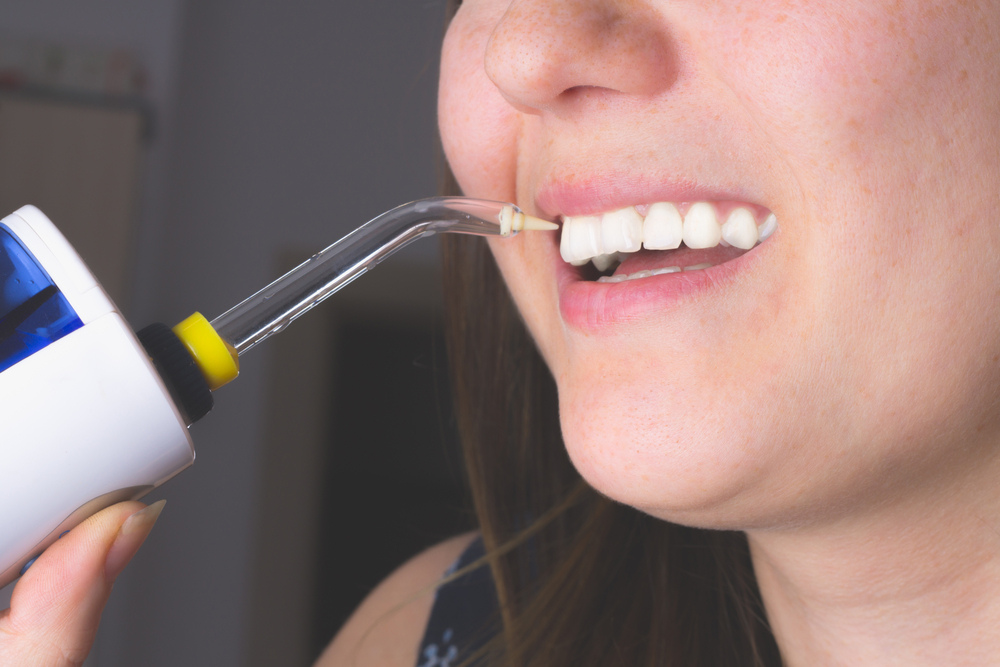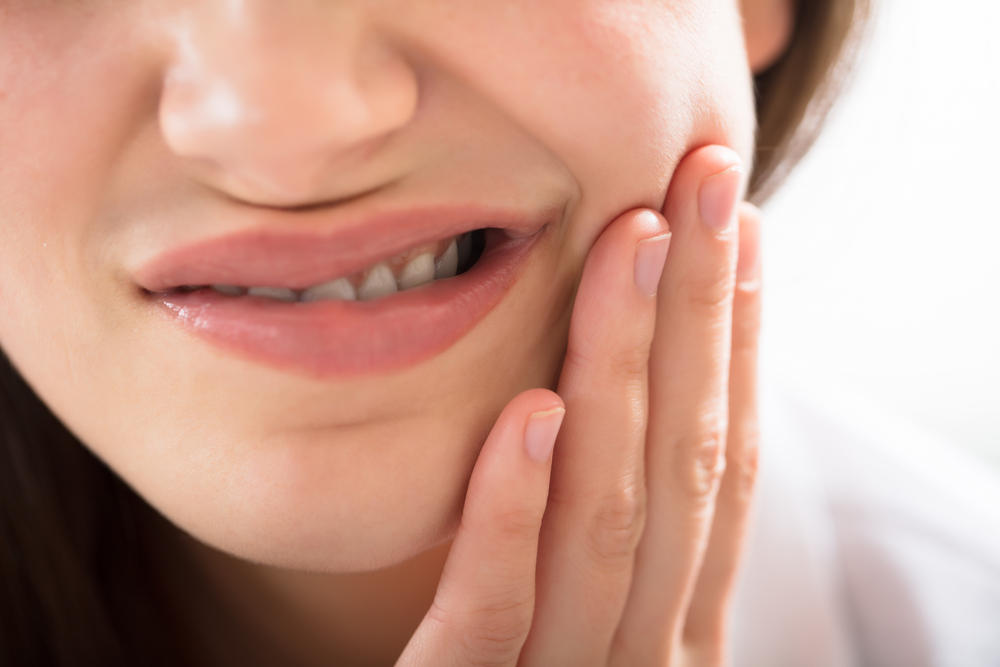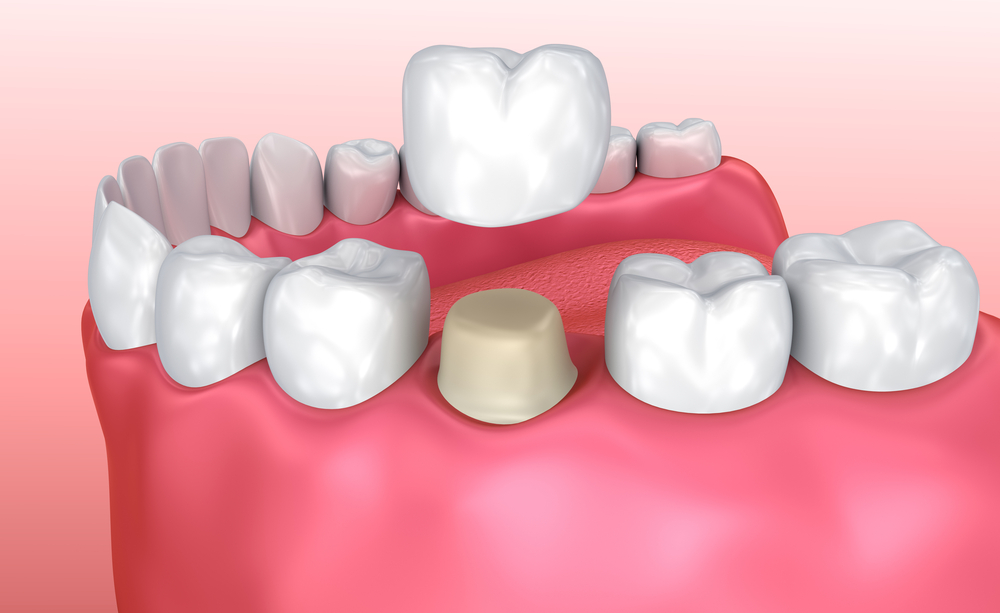- An overbite is a misalignment of the upper and lower teeth that causes the upper teeth to be forced forward.
- Overbites can change the overall shape of the face, making the chin smaller and the face rounder.
- Orthognathic surgery can provide dramatic improvements, but comes at a high cost.
There are many ways to correct an overbite, although the treatment options are often difficult, slow, or expensive. The choice of which overbite treatment is best for you will depend on the severity of your condition and your personal lifestyle preferences.
What is an overbite?
An overbite is a type of malocclusion or misalignment of the upper and lower rows of teeth. With an overbite (also called an overjet, or what doctors call a distocclusion), the upper teeth are forced forward relative to the lower teeth. Overbites can result in a smaller than normal chin, headaches, jaw pain, and a round-looking facial appearance.
People with a severe overbite may also find themselves grinding or clenching their teeth. Over many years, overbites can contribute to traditional dental issues such as gum disease and tooth decay. In extreme cases, an overbite may even affect speech or the ability to chew food properly.
An overbite can also affect the temporomandibular joint (TMJ), which connects the jaw to the skull. Jaw pain associated with an overbite is commonly called “TMJ pain.” In severe cases, people with an overbite can experience pain that radiates outward from the TMJ area and causes headaches, even migraines.
Overbites may also contribute to sleep apnea by reducing the size of the airway during sleep.
What causes an overbite?
Most overbites are the result of genetics, heredity, and the natural process of growing our first teeth.
As children’s teeth grow, they emerge randomly from the gums and stop growing when they hit adjacent teeth. This degree of randomness makes malocclusions and overbites quite common.
Making matters worse, overbites are often exacerbated by the early childhood habit of thumb sucking. This can put pressure on the upper teeth, forcing them forward, and put similar pressure on the lower jaw, forcing it backward. As we get older, the overbite that started in childhood may become more pronounced.
What are the main types of overbite?
There are two primary categories of overbite: skeletal and dental.
A skeletal overbite is the result of the lower jaw being physically too small to fit the upper jaw. The result is that the upper rows of teeth push forward over the small jaw. A skeletal overbite may require a surgical solution to realign the jaw.
A dental overbite is the result of improperly aligned teeth. Unlike the skeletal overbite, the lower jaw is correctly balanced with the upper jaw, but a misalignment of the teeth causes the lower jaw to be forced back toward the neck. Orthodontic (nonsurgical) treatments are typically sufficient to correct dental overbites.
Can an overbite be corrected?
The process of correcting an overbite can take a long time—several years in some cases—depending on the severity of the overbite and the age of the patient. The options and recommendations for children are often different from those presented to adults.
- Retainers, elastics, and jaw expanders
These options are not typically presented to adults because of the impact they can have on an individual’s lifestyle and because children’s bones and teeth are easier to align and reposition than those of adults.
Orthodontic elastic bands and retainers physically encourage bite correction and proper alignment of the teeth over time.
- Braces
Braces are a common orthodontic method for treating overbites that work by repositioning the teeth and correcting alignment. Braces are a treatment option for both adults and children.
- Invisalign
Because of their aesthetic appeal, see-through plastic Invisalign aligners are a popular treatment option for bite correction and fixing alignment, especially among adults looking for a more subtle alternative to braces.
- Tooth extraction
In some cases, your dentist may recommend tooth removal to allow your remaining teeth to align correctly. For overbite correction, it’s typical to remove one or more teeth from the upper jaw. The gaps created allow for the front teeth to be moved back into a position that correctly aligns with the lower jaw.
- Orthognathic surgery
Orthognathic surgery may be recommended in patients with more severe overbites. The procedure is generally performed between the ages of 13 and 18, and involves repositioning the jaw so that it aligns correctly.
Orthognathic surgery is typically performed by an oral and maxillofacial surgeon who works closely with an orthodontist.
Through computer imagery, the orthodontist conducts preoperative planning to assess the predicted results of the procedure. In the months before surgery, the teeth are straightened by one of the traditional orthodontic methods described above.
During surgery, the lower jaw is sometimes moved forward, but in other cases, both the upper and lower jaw are adjusted to achieve a position that works both physically and aesthetically.
How long is recovery from orthognathic surgery?
The postoperative recovery process from corrective jaw surgery is a long one. Expect significant lifestyle changes for at least six to eight weeks following surgery.
You may experience mood shifts and even depression following surgery because it can take a long time for the final results to become visible. Added to that, you may find the initial facial swelling and edema very disturbing.
Also expect to have trouble eating afterwards. Your orthodontist may advise you to consult with a dietician regarding nutritional supplements.
Most patients are able to return to work within two weeks of their surgery. The acute phase of the recovery will take three to four weeks to subside, and most of the swelling should be gone within two months.
What are the risks associated with orthognathic surgery?
For the most part, surgery to correct an overbite is a low-risk procedure when conducted by an experienced surgeon. That said, as with all invasive surgical procedures, there is some risk involved, the most common being nerve damage resulting in a loss of sensation in the chin or lower jaw, blood loss, postoperative infection, jaw fracture, and the possibility of increased TMJ pain.
There is also a risk that the jaw will revert to its prior position, requiring further surgery.
How much does it cost to correct an overbite?
Because there are several types and severities of overbites, the cost of correcting them varies widely. Other factors affecting the cost are geographic location and the experience of the dentist or orthodontist.
The cost of braces typically ranges from $2500 to $7500, and jaw surgery is usually upwards of $20,000, often $40,000 or more.
Typically, it’s better to address overbite problems in childhood when the costs are often lower and the treatment easier.
Do you need to correct your overbite?
An overbite will not self-correct. But whether you need to fix your overbite at all is a question only you and your dentist can answer.
If your overbite is slight and not causing any problems or pain, you may be able to ignore it. But if it’s causing TMJ pain or headaches, or if you feel it’s having a negative effect on your personal appearance, you should probably consider treatment.
Before choosing any treatment option, it’s important that you consult with your dentist or orthodontist to assess your goals, be aware of the risks and difficulties involved, and be realistic about your expectations.









